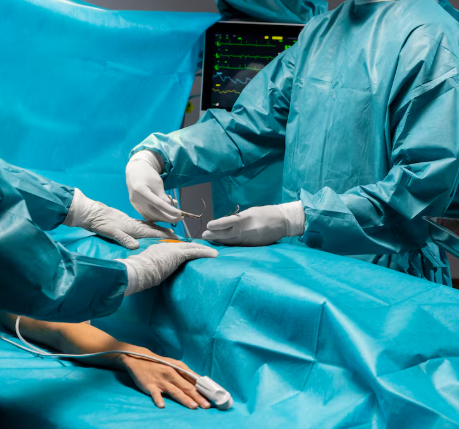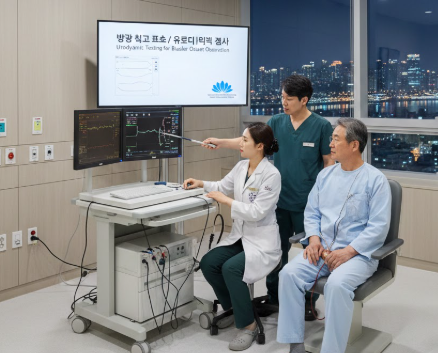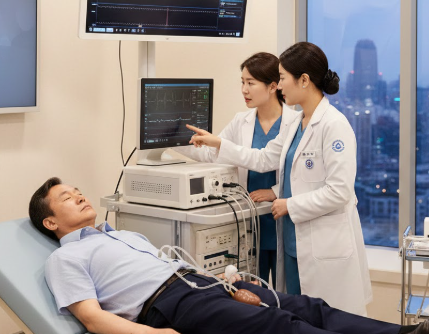Treatment Overview
The Advanced Laparoscopic Uterus Removal Surgery (ALURS) in Korea is a modern, minimally invasive procedure for hysterectomy that utilizes high-definition laparoscopic technology to remove the uterus with precision and minimal tissue trauma. This approach provides superior visualization of pelvic structures, allowing surgeons to operate with exceptional accuracy while minimizing patient discomfort and recovery time.
Korea is renowned globally for pioneering laparoscopic surgical innovations, offering advanced techniques such as three-dimensional (3D) laparoscopy, robotic-assisted laparoscopy, and energy-based vessel sealing, making it one of the most sought-after destinations for uterus removal surgery.
Purpose & Benefits
Purpose:
- Treat uterine conditions such as fibroids, adenomyosis, endometriosis, prolapse, or malignancy
- Offer a safe, minimally invasive option for complete uterus removal
- Reduce recovery time and postoperative discomfort compared to traditional surgery
Benefits:
- Smaller incisions with less visible scarring
- Reduced blood loss and postoperative pain
- Shorter hospital stays (often 1–3 days)
- Faster recovery and return to daily activities
- Lower risk of adhesions and complications
- Enhanced precision due to advanced laparoscopic technology
- Better preservation of surrounding pelvic structures
Ideal Candidates
ALURS is suitable for women who:
- Require hysterectomy for benign or select malignant conditions
- Prefer minimally invasive surgery with reduced recovery time
- Seek advanced technology for improved surgical outcomes
- Are in good general health and suitable for laparoscopic surgery
- Have no contraindications for laparoscopic approaches
Korean hospitals ensure thorough preoperative evaluation, including advanced imaging and consultation, to confirm candidacy.
Possible Risks & Complications
While ALURS is highly safe, potential risks include:
- Minor bleeding or infection
- Injury to surrounding organs such as the bladder, bowel, or ureters
- Anesthesia-related complications
- Temporary urinary or bowel changes
- Rare adhesions or nerve irritation
Korean surgeons minimize risks using advanced laparoscopic systems, real-time imaging, and meticulous surgical technique.
Surgical Techniques Used
Korean hospitals use multiple advanced laparoscopic methods:
- Multi-Port Laparoscopy: Several small incisions for optimal access and visualization.
- Single-Port Laparoscopy: Minimizes scars by operating through one hidden incision.
- Robotic-Assisted Laparoscopic Hysterectomy: Enhances dexterity and precision in complex cases.
- 3D High-Definition Imaging: Improves depth perception and surgical accuracy.
- Energy-Based Vessel Sealing: Ensures efficient and safe hemostasis.
- Fluorescence Imaging: Guides surgeons for precise dissection and preservation of structures.
These innovations make Korea a global leader in laparoscopic uterus removal.
Recovery & Aftercare
Recovery from ALURS is typically faster compared to open hysterectomy. Hospital stays range from 1 to 3 days, and most patients resume normal activities within 1–2 weeks.
Postoperative care includes:
- Pain management and incision care
- Avoiding heavy lifting and strenuous activities for 4–6 weeks
- Routine follow-up visits for healing and assessment
- Pelvic floor rehabilitation when needed
- Nutrition and lifestyle guidance to support recovery
Korean hospitals provide personalized aftercare programs to ensure optimal healing.
Results & Longevity
ALURS offers long-term benefits:
- Complete removal of diseased uterine tissue
- Minimal scarring with aesthetically pleasing results
- Faster recovery and improved quality of life
- Lower postoperative complication rates
- Better preservation of surrounding pelvic structures
Korean surgeons ensure long-term success through careful surgical planning and advanced laparoscopic techniques.
Treatment Process in Korea
The ALURS program in Korea follows a streamlined process:
- Preoperative Evaluation: Advanced pelvic imaging, blood tests, and surgeon consultation.
- Customized Surgical Planning: Technique tailored to patient anatomy and condition.
- Advanced Laparoscopic Surgery: Using high-definition imaging and precise energy devices.
- Postoperative Care: Includes pain management, physiotherapy, nutrition advice, and follow-up.
Korean hospitals provide multilingual patient support, luxurious recovery facilities, and internationally accredited standards of care, making Korea a leading destination for ALURS.
Cost Range
The cost of Advanced Laparoscopic Uterus Removal Surgery in Korea typically ranges from USD 9,000 to 16,000, depending on:
- Complexity of the procedure
- Hospital and surgeon reputation
- Use of robotic assistance or advanced imaging technology
- Extent of postoperative care and recovery program
This cost generally includes preoperative evaluation, surgery, anesthesia, hospitalization, and follow-up care.
Popular Clinics
- Samsung Medical Center (Seoul): Renowned for high-tech laparoscopic gynecologic surgery.
- Asan Medical Center (Seoul): Known for precision and minimally invasive hysterectomy.
- Severance Hospital (Yonsei University Health System, Seoul): Leader in advanced laparoscopic uterus removal.
- CHA Gangnam Medical Center: Specializes in minimally invasive gynecologic surgery.
- Ewha Womans University Medical Center: Offers advanced laparoscopic hysterectomy with personalized recovery programs.




